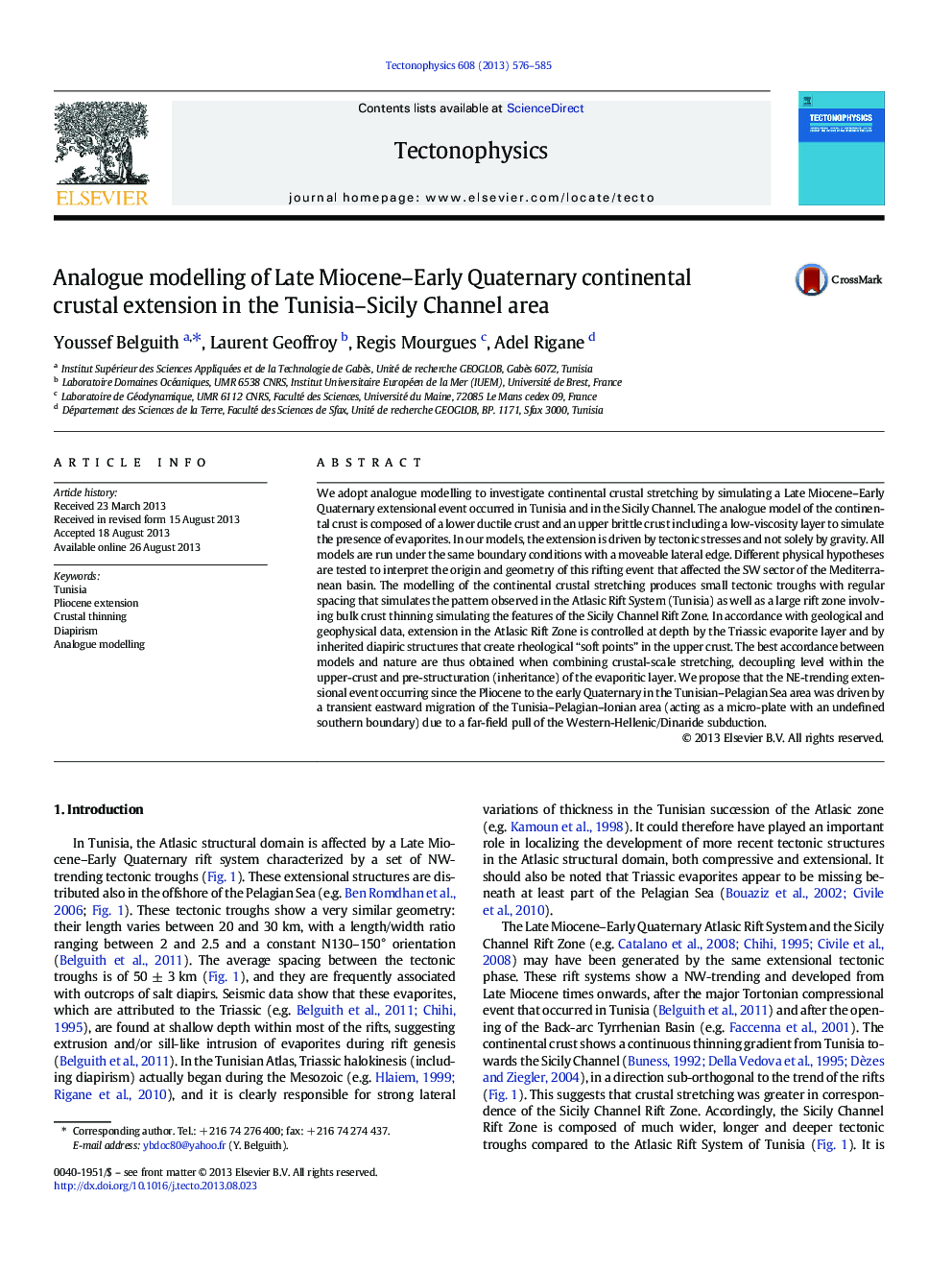| کد مقاله | کد نشریه | سال انتشار | مقاله انگلیسی | نسخه تمام متن |
|---|---|---|---|---|
| 6433982 | 1636779 | 2013 | 10 صفحه PDF | دانلود رایگان |
- We simulate extensional event in Tunisia-Sicily Channel by analogue modelling.
- A lower ductile crust and an upper brittle crust compose the continental crust.
- The upper crust includes a low-viscosity layer to simulate evaporites.
- Crustal stretching produces small Atlasic grabens and large Sicily Channel grabens.
- The extension was driven by the Western-Hellenic subduction.
We adopt analogue modelling to investigate continental crustal stretching by simulating a Late Miocene-Early Quaternary extensional event occurred in Tunisia and in the Sicily Channel. The analogue model of the continental crust is composed of a lower ductile crust and an upper brittle crust including a low-viscosity layer to simulate the presence of evaporites. In our models, the extension is driven by tectonic stresses and not solely by gravity. All models are run under the same boundary conditions with a moveable lateral edge. Different physical hypotheses are tested to interpret the origin and geometry of this rifting event that affected the SW sector of the Mediterranean basin. The modelling of the continental crustal stretching produces small tectonic troughs with regular spacing that simulates the pattern observed in the Atlasic Rift System (Tunisia) as well as a large rift zone involving bulk crust thinning simulating the features of the Sicily Channel Rift Zone. In accordance with geological and geophysical data, extension in the Atlasic Rift Zone is controlled at depth by the Triassic evaporite layer and by inherited diapiric structures that create rheological “soft points” in the upper crust. The best accordance between models and nature are thus obtained when combining crustal-scale stretching, decoupling level within the upper-crust and pre-structuration (inheritance) of the evaporitic layer. We propose that the NE-trending extensional event occurring since the Pliocene to the early Quaternary in the Tunisian-Pelagian Sea area was driven by a transient eastward migration of the Tunisia-Pelagian-Ionian area (acting as a micro-plate with an undefined southern boundary) due to a far-field pull of the Western-Hellenic/Dinaride subduction.
Journal: Tectonophysics - Volume 608, 26 November 2013, Pages 576-585
